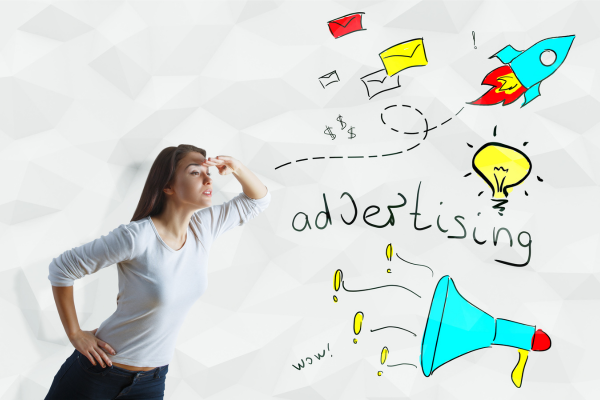
Programmatic advertising is revolutionizing digital marketing by automating the buying, placement, and optimization of ads. It uses advanced technology to analyze user behavior and deliver ads that resonate with the right audience at the right time. Here’s a detailed breakdown of its key components, applications, and strategies for effective implementation:
Table of Contents
ToggleWhat is Programmatic Advertising?
Programmatic advertising is an automated process for purchasing digital ad space using algorithms and real-time data. It replaces manual negotiations with AI-powered platforms, ensuring that ads are placed in front of the most relevant audience. Unlike traditional methods, programmatic focuses on precision targeting, enabling advertisers to achieve higher engagement and ROI.
How Programmatic Advertising Works
Ad Exchanges:
These are digital marketplaces where publishers list available ad inventory for advertisers to bid on.
Demand-Side Platforms (DSPs):
Advertisers use DSPs to automate bidding and purchase inventory across multiple ad exchanges.
Supply-Side Platforms (SSPs):
Publishers utilize SSPs to manage, sell, and optimize their ad space for maximum revenue.
Real-Time Bidding (RTB):
RTB involves live auctions where advertisers bid for ad impressions in milliseconds, ensuring optimal ad placement.
Data Management Platforms (DMPs):
These platforms collect and analyze user data to improve ad targeting by understanding audience preferences and behaviors.
Benefits of Programmatic Advertising
Precision Targeting:
With access to detailed user data, programmatic advertising enables hyper-targeted campaigns. Ads can be tailored based on demographics, interests, location, and online behavior, ensuring maximum relevance.
Real-Time Optimization:
Programmatic platforms use AI to monitor campaign performance and make real-time adjustments, such as changing bids or optimizing ad placements for better results.
Cost Efficiency:
By automating the ad-buying process and targeting only relevant audiences, programmatic advertising minimizes wastage and ensures better utilization of marketing budgets.
Scalability:
Programmatic advertising allows brands to scale campaigns across multiple platforms and devices, reaching global audiences efficiently.
Enhanced Transparency:
Detailed analytics and reporting features enable advertisers to monitor where their ads are being displayed and measure performance accurately.
Types of Programmatic Advertising
Open Auction:
Ads are sold in a public marketplace through a competitive bidding process.
Benefits include wide reach and competitive pricing.
Private Marketplace (PMP):
Publishers invite select advertisers to bid on premium inventory.
Offers exclusivity and higher quality ad placements.
Programmatic Direct:
Ads are purchased directly from publishers without bidding.
Ensures guaranteed placements and pricing.
Preferred Deals:
Advertisers negotiate fixed pricing for ad inventory before it enters the auction.
Applications of Programmatic Advertising
Display Ads:
Static or dynamic banners placed across websites to increase brand visibility.
Video Ads:
Delivered on platforms like YouTube, in-app, or social media, these ads offer higher engagement rates.
Native Ads:
Blended seamlessly into content, native ads enhance user experience while promoting the brand.
Mobile Ads:
Targeted ads optimized for smartphones and tablets, focusing on mobile-first audiences.
Connected TV (CTV) Ads:
Programmatic ads displayed on streaming platforms like Netflix and Hulu.
Challenges in Programmatic Advertising
Ad Fraud:
Fake clicks and impressions from bots can inflate campaign costs. Advertisers must work with trusted platforms and implement fraud-detection tools.
Data Privacy Regulations:
Compliance with laws like GDPR and CCPA is crucial to protect user data and maintain trust.
Complexity:
Programmatic ecosystems can be overwhelming for beginners, requiring expertise to navigate DSPs, SSPs, and RTB systems.
Ad Blocking:
Many users employ ad blockers, limiting reach and visibility. Brands need to create engaging and non-intrusive ads to mitigate this challenge.
Best Practices for Programmatic Advertising
Set Clear Objectives:
Define specific goals, such as increasing brand awareness, generating leads, or boosting conversions, to guide campaign strategies.
Use High-Quality Data:
Ensure data accuracy by integrating first-party, second-party, and third-party data to optimize targeting.
Leverage Retargeting:
Re-engage users who have previously interacted with your website or app by delivering personalized ads.
Monitor Performance Regularly:
Analyze key performance indicators (KPIs) like impressions, clicks, and conversions to adjust strategies for better results.
Optimize Ad Creatives:
Use A/B testing to identify the most effective visuals, headlines, and CTAs for your audience.
Tools and Platforms for Programmatic Advertising
Google Display & Video 360:
Offers access to extensive ad inventory and advanced targeting options.
The Trade Desk:
Provides a robust DSP for real-time bidding and campaign management.
Adobe Advertising Cloud:
Integrates AI to automate campaign optimization and maximize ROI.
AppNexus:
A leading SSP and DSP for managing programmatic advertising.
MediaMath:
Offers tools for cross-channel advertising and in-depth analytics.
Future Trends in Programmatic Advertising
AI-Driven Campaigns:
AI will play a larger role in optimizing bids, improving targeting, and predicting customer behavior.
Voice and Visual Ads:
Programmatic ads tailored for voice assistants and AR/VR platforms are on the rise.
Sustainability in Advertising:
Brands will adopt eco-friendly practices, focusing on reducing digital advertising’s environmental impact.
Omnichannel Integration:
Seamless campaigns across multiple platforms and devices will become the norm.
Programmatic advertising represents the future of digital marketing by combining automation, precision targeting, and real-time optimization. It enables businesses to reach the right audience effectively, maximize ROI, and enhance brand visibility. While it comes with challenges, understanding its mechanisms and adopting best practices can help brands unlock its full potential.
Embrace programmatic advertising today and transform your marketing strategies for success!

